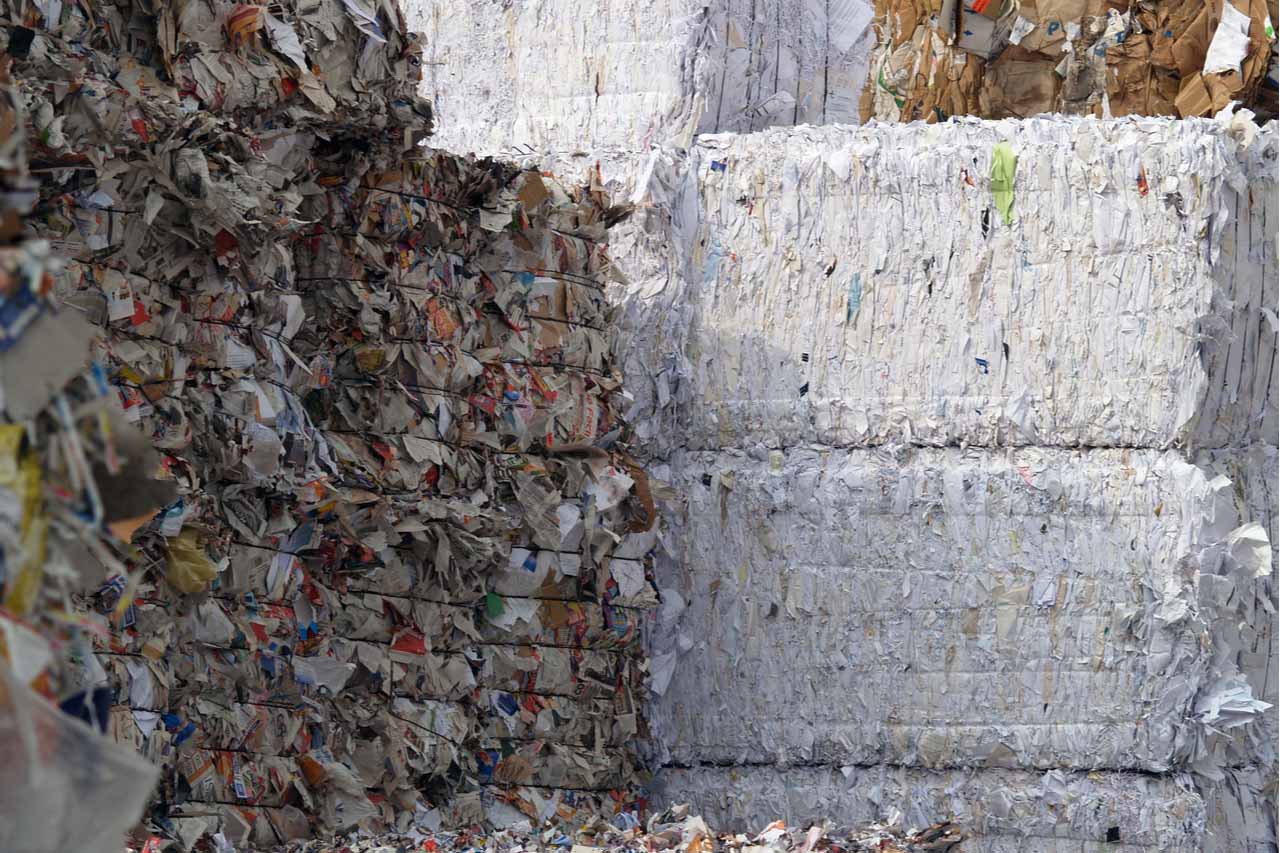
An extended producer responsibility bill is currently under consideration in California. | Luis M. Seco/Shutterstock
This story has been corrected.
Nearly a dozen legislators signed a letter asking to remove fiber from California’s proposed extended producer responsibility bill, as it undergoes more amendments in the final days before a June 29 deadline.
The letter, sent by 11 Assembly Democrats June 22, asked the bill’s sponsor, Sen. Ben Allen, and Senate majority leader Bob Hertzberg to “amend SB 54 to remove paper products entirely from the bill.”
Meanwhile, amendments to the bill on June 24 and June 26 provided an “off-ramp” for certain types of materials, with an eye on “tertiary packaging” (packaging materials used to transport products, for instance, that do not generally end up in the residential waste stream).
The amended bill specifies that the producer-funded framework would not include a material type that has demonstrated a recycling rate of 65% for three consecutive years prior to January 1, 2027, and on and after that date demonstrates a recycling rate at or over 70% annually, as demonstrated to state officials every two years.
The amended text also notes that to qualify for the off-ramp, the material must meet the following criteria: it is not collected through a residential recycling collection service, it does not undergo separation from other materials at a commingled recycling processing facility, and it is recycled via a responsible end market.
The American Forest & Paper Association (AF&PA) applauded the letter in a June 23 press conference and the amendment in a June 27 tweet, saying the latest version of the bill “recognizes the extraordinary achievements of paper recycling and would be an important step toward creating a more circular economy.”
Terry Webber, AF&PA vice president of industry affairs, told Resource Recycling the amendment is “very important to us. It’s one of the things we’ve been seeking,” as it “provides an off-ramp for industries like ours that have already stepped up and made the investments necessary” for a high recycling rate.
Webber said at the press conference that “ultimately, we’re asking that legislators focus on improving the recycling rate for material with low recovery rates instead of creating mandates and fees for paper recyclers that could direct investment away.”
“We have a real ownership stake in effective paper recycling,” Webber said, adding that “the forest paper industry is circular by nature and most products are easily recycled.”
SB 54, which has appeared in different iterations over the past three years, would create a producer responsibility organization (PRO) to run a collection and recycling program with state oversight, establishing a form of extended producer responsibility (EPR) for printed paper and packaging.
Amendments continue
The bill was amended on June 24 and again on June 26 to strengthen environmental protection and government oversight and enforcement, according to the National Stewardship Action Council (NSAC). That includes more clarification that CalRecycle will revoke approval of the PRO if it fails to meet the requirements of the bill.
“NSAC fought very hard for this language on PRO revocation based on experiences with other PROs and programs,” an email from the organization said. “To our knowledge, this is the most powerful tool ever given to a government agency to ensure program compliance.”
The weekend amendments also clarified that the definition of recycling does not include combustion, incineration, energy generation or fuel production except for anaerobic digestion and increased the mandated recycling rate for expanded polystyrene from 20% to 25% by 2025.
On the enforcement side, the bill now states that CalRecycle may adopt regulations to verify that materials shipped out of state meet processing and contamination standards, it prevents EPR fees from being listed as a separate item on a receipt or invoice and it establishes fees to incentivize producers to shift away from materials with heavy metals, pathogens or additives.
There is also a plastic tax ballot initiative in play in the state, but Webber said AF&PA doesn’t have a position on this ballot initiative and does not expect to have a position on it.
The paper industry organization has opposed EPR bills in other states, citing the same high nationwide recycling rates. In Colorado, which recently passed an EPR bill, supporters said the state had a much lower recycling rate than the national average.
The letter from legislators in California said that “more paper by weight is recycled from municipal waste streams every year than all other packaging material combined,” echoing the high recycling rate the AF&PA also highlighted.
Surveying the numbers
Since 2009, the national paper recycling rate has met or exceeded 63% each year, and in 2021 it was 68%. Webber said 89.9% of all Californians have access to curbside recycling. The Recycling Partnership’s national database also found a curbside recycling access rate in California of over 90%.
“This is a clear reflection of the already successful end-market recycling efforts used in the paper industry,” the letter said. “The other extended producer responsibility concepts in SB 54 may be appropriate for other materials, but the Legislature should study how SB 54 will impact paper’s existing recycling success before implementing any new additional regulatory burdens.”
Webber told Resource Recycling that he’s pretty confident the industry will be able to hit the 65% and 70% benchmarks.
“It’s hard to predict the future, but the infrastructure is there, the access to recycling is there,” he said, adding that consumers are familiar with how to recycle paper and containerboard.
California achieved an overall 42% recycling/composting rate in 2020, up from 37% the year before, according to state data. A paper-specific rate was not available.
Nationwide, The Recycling Partnership has found that three out of five cardboard boxes and two-thirds of all mixed paper generated in the U.S. end up in landfills.
Webber said at the press conference the nation’s relatively high paper recycling rate is one that “EPR regulation would not improve on” and said a “poorly designed EPR” program could impact the current recycling stream.
“The current version goes a lot further than any other EPR program in North America in scope,” Webber said, and touches on industrial material.
“That’s a very important source of fiber for our facility, so when we talk about how it will potentially negatively impact the paper industry, the legislation is unique because it goes so far and reaches into the system that our industry has created to recover our product,” Webber said.
He told Resource Recycling that looking forward, AF&PA is focused on making sure plastic-coated fiber products are treated like paper, not plastic, as the paper industry already knows how to recycle poly-coated cups and items like milk cartons.
Webber added at the press conference that “paper is a success story because of the industry investments” and noted that the industry plans to make approximately $5 billion more in investments by 2024, which would increase the country’s processing capacity by 25%.
AF&PA “believes in producer responsibility,” Webber said, but the paper industry has achieved a “measurable metric of success through a market-based approach.”
The lawmaker letter also expressed concern about how SB 54’s source reduction provisions would affect jobs in the paper and printing industry.
Right now, the paper industry contributes $633 million a year to California in state and local taxes, Webber said, creates 55,000 jobs and amounts to $3.6 billion in annual compensation. There are 394 paper facilities in the state, Webber said, and 12 of them are AF&PA members.
Webber said any EPR scheme should focus on materials with low recycling rates or hard-to-recycle items, and any EPR program enacted should credit the work the paper industry has already done and “strictly prohibit the use of fees from one material to subsidize another material.”
After the June 26 amendment, Webber said he’d like to see the same kind of off-ramp option in other states’ EPR bills, as it’s “a model worth following.”
This story has been corrected to more accurately reflect requirements for a material to be exempted.
More stories about EPR/stewardship
- CAA publishes revised Colorado program plan
- WM outlines investments in recycling infrastructure
- ‘Operational readiness is high’ as Oregon rolls out EPR



